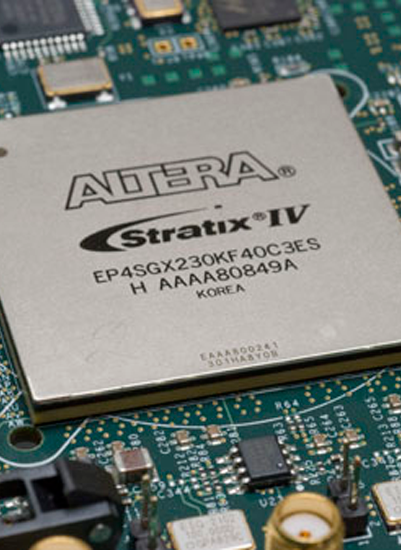FPGA vs. GPU in Edge AI: Why Latency Wins Markets
Industrial-Grade Speed: The FPGA Edge
In mission-critical edge applications, microseconds determine success. Real-world benchmarks reveal decisive gaps:
Xilinx Versal AI Edge Series (e.g., VE2302) processes 4K video analytics in <100ms with integrated AI Engines, enabling real-time defect detection on production lines
NVIDIA T4 GPUs average >300ms for equivalent tasks due to data transfer bottlenecks, limiting dynamic sensor fusion

FPGA’s hardware-customized parallelism outperforms GPU batch processing:
Smart Factories: Spartan-7 (XC7S100) powers 3D vision systems inspecting 1,000+ parts/minute, reducing false rejects by 30% via on-chip DSP blocks
Intelligent Traffic: Agilex 5 (AGF014) achieves 5ms LiDAR fusion latency with integrated Arm Cortex-A55 cores, enabling 100km/h collision avoidance
Medical Edge: Virtex-5QV’s 450MHz clock enables sub-10ms endoscopic AI diagnosis, minimizing motion blur in surgery
Agilex 5 & Spartan UltraScale+: Redefining Edge Efficiency
Altera Agilex 5 (e.g., AGF023)
AI Tensor Blocks deliver 1.6x performance-per-watt vs. prior gen, ideal for battery-driven devices
Dual MIPI support cuts image preprocessing latency by 40% (critical for ADAS L2+)
AMD Spartan UltraScale+ (e.g., SU50P):
16nm FinFET slashes power 30% vs. 28nm predecessors, with hardened LPDDR5 controllers (4266MHz) for high-throughput edge gateways
Storage & Networking: Accelerating Data Pipelines
Ultrastar DC SN640 NVMe SSD: 7.68TB U.2 drives handle 720K IOPS, ideal for edge video buffer pools
Mellanox ConnectX-5: 200Gb/s RoCE reduces CPU load by 50% in FPGA-SSD data flows
Design Your Winning Edge Solution
Schedule a Consultation
Free architecture review + latency simulation for:
Xilinx Versal / Altera Agilex 5 FPGA acceleration
Ultrastar SSD + Mellanox NIC optimized bundles



No comment